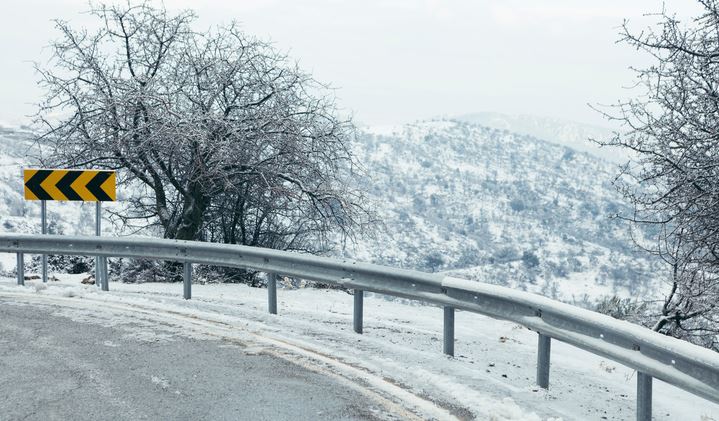
With so much to do during the holidays, it can be easy to forget that safety should remain a primary concern at home, at work and on the job. The holidays are hardly the time to turn a blind eye to safety:
-
One of every three home Christmas tree fires is caused by electrical problems.
-
A heat source too close to trees causes one in every four of Christmas tree fires.
-
December is the peak month for home candle fires.
-
One out of three candle fires originate in the bedroom.
-
Typical symptoms of foodborne illness are vomiting, diarrhea, and flu-like symptoms, which can start anywhere from hours to days after contaminated food or drinks are consumed.
-
In the United States, motor vehicle crashes are in the top 10 causes of death for people aged 1-54, and more than 30,000 people are killed in crashes each year.
As a courtesy to our subscribers and friends, we have assembled some easy tips to help you and yours make this holiday season a safe and happy one.
Decorations
-
Don’t use lit candles near trees, boughs, curtains/drapes, or with any other potentially flammable item.
-
When using artificial snow on windows or other surfaces, follow directions. These sprays can irritate lungs if they are inhaled.
-
Many holiday plants are poisonous if ingested. These include: mistletoe, holly berries, Jerusalem cherry and amaryllis. Keep these plants out of children's reach.
-
When displaying a tree, cut off about two inches off the trunk and put the tree in a sturdy, water-holding stand. Keep the stand filled with water so the tree does not dry out quickly.
-
Position trees away from fireplaces, radiators and other heat sources. Make sure the tree does not impede foot traffic.
-
Avoid placing breakable ornaments where small children or pets can reach them.
-
If you opt for an artificial tree, choose one that is tested and labeled as fire resistant. Artificial trees with built-in electrical systems should have the “Underwriters Laboratory” (UL) label.
-
Use indoor lights indoors and outdoor lights only outdoors. Look for the UL label. Check lights for broken or cracked sockets, frayed or bare wires, and loose connections. Replace or repair any damaged light sets.
-
Use no more than three light sets on any one extension cord. Extension cords should be placed against the wall to avoid tripping hazards.
-
Inspect all lights, decorations and extension cords for damage before using.
-
Don’t ever run cords under rugs, around furniture legs or across doorways.
-
Turn off tree lights and decorations when you go to bed or leave the house. Unplug extension cords when not in use.
-
When displaying outdoor lights, fasten them firmly to a secure support with insulated staples or hooks to avoid wind damage.
-
Never nail, tack or stress wiring when hanging lights and keep plugs off the ground away from puddles and snow.
-
Don’t leave candles unattended. Whenever possible, opt for electronic versions, which provide a warm glow without the associated risk of fire.
Food
-
Never eat dough or uncooked batter.
-
When preparing a holiday meal for friends and family, be sure to wash your hands, utensils, sink, and anything else that touches raw poultry.
-
Don’t defrost food at room temperature. Instead, thaw it in the refrigerator, in cold water or in the microwave.
-
Keep your knives sharp. Most knife injuries occur due to dull blades.
-
Use a clean food thermometer to cook foods to a safe internal temperature before serving.
-
Avoid cleaning kitchen surfaces with wet dishcloths or sponges, which harbor bacteria. Use paper towels, instead.
-
Keep cold foods cold and hot food hot. If you’re concerned that your coworker’s casserole has been sitting out too long, move along. Better to be food-safe than sorry.
-
Refrigerate or freeze leftovers in covered shallow containers within two hours of cooking.
-
When reheating leftovers, bring to at least 165°F to eliminate bacterial growth.
Vehicles
-
Check items such as the brakes, spark plugs, battery, and tires. Check your owner’s manual and follow recommendations for tune-up and oil change intervals.
-
Before heading out on winter roads, evaluate the condition of your tires. When in doubt, take your vehicle to a mechanic to make sure tread is sufficient.
-
Be prepared for emergency situations on the road by keeping a winter “survival kit” in your trunk. Include items such as a working flashlight, extra batteries, reflective triangles, compass, first aid kit, exterior windshield cleaner, ice scraper, snow brush, wooden stick matches in a waterproof container, and non-perishable, high energy foods like unsalted canned nuts, dried fruits and hard candy.
-
Keep anything of value in the trunk or covered storage area.
Remember that safety is a priority for everyone all year long. A convenient and affordable way to make sure you are prepared for disasters and emergencies of virtually every kind is to subscribe to the RJWestmore Training System by Allied Universal Fire/Life Safety Services, which has been designed to help improve and save lives. For more information about the best system out there, or to subscribe, click here.
Visit our Security Tips section for more ways to stay safe during the holidays.
 About the Author
About the Author
Kimber Westmore is the director of RJWestmore Training System by Allied Universal Fire/Life Safety Services.









